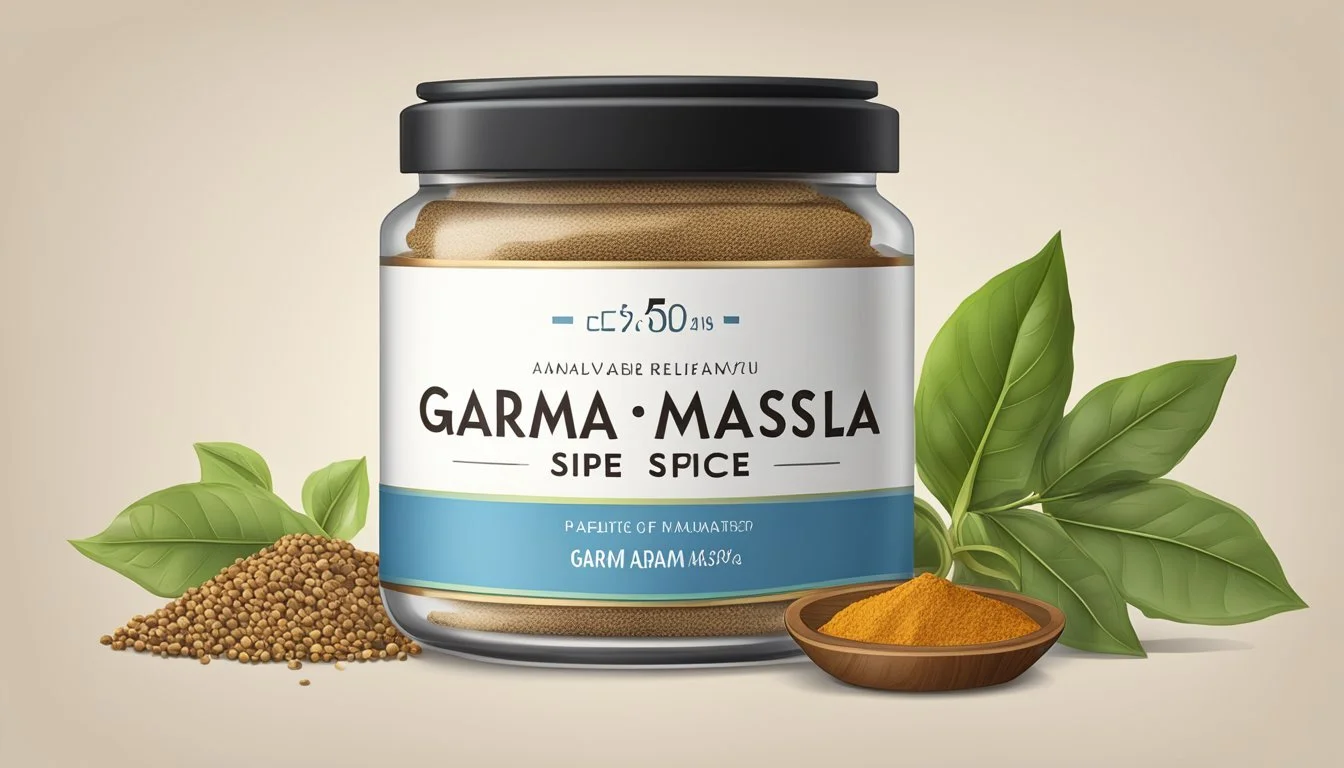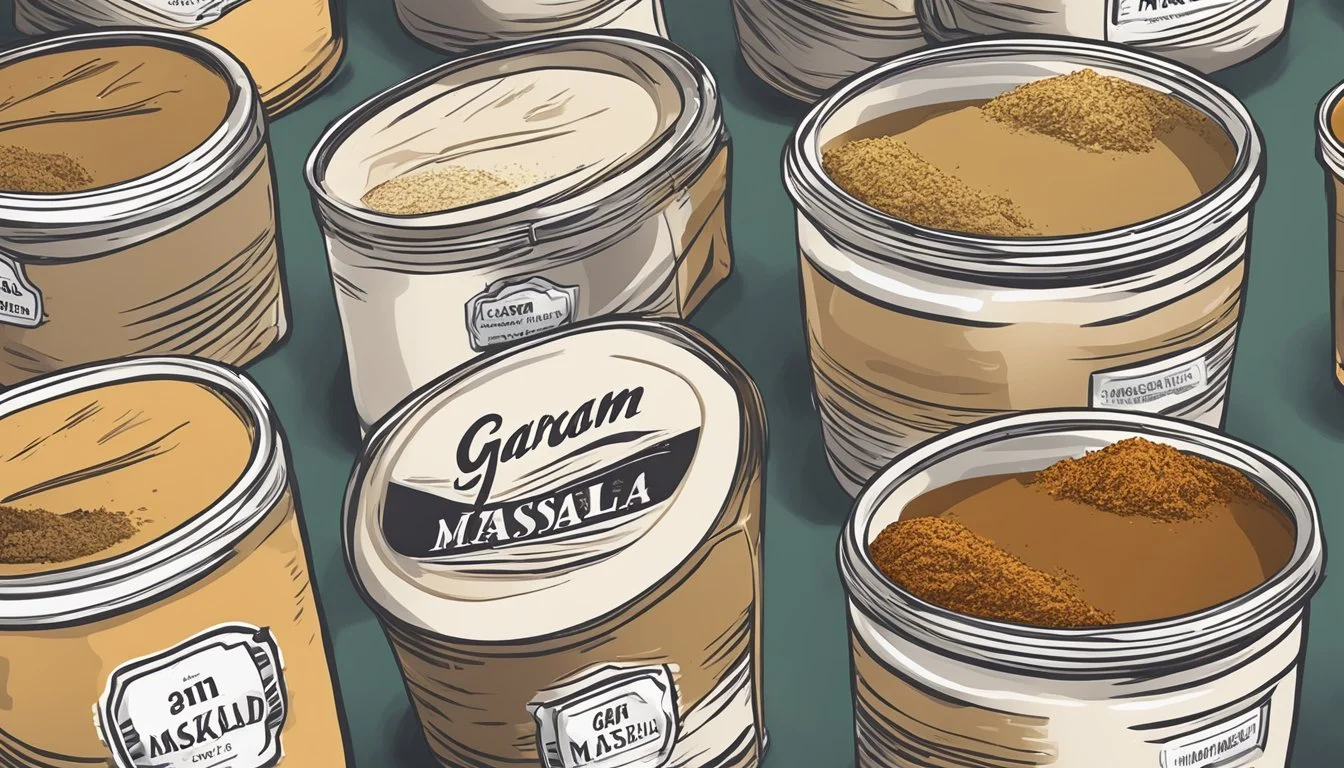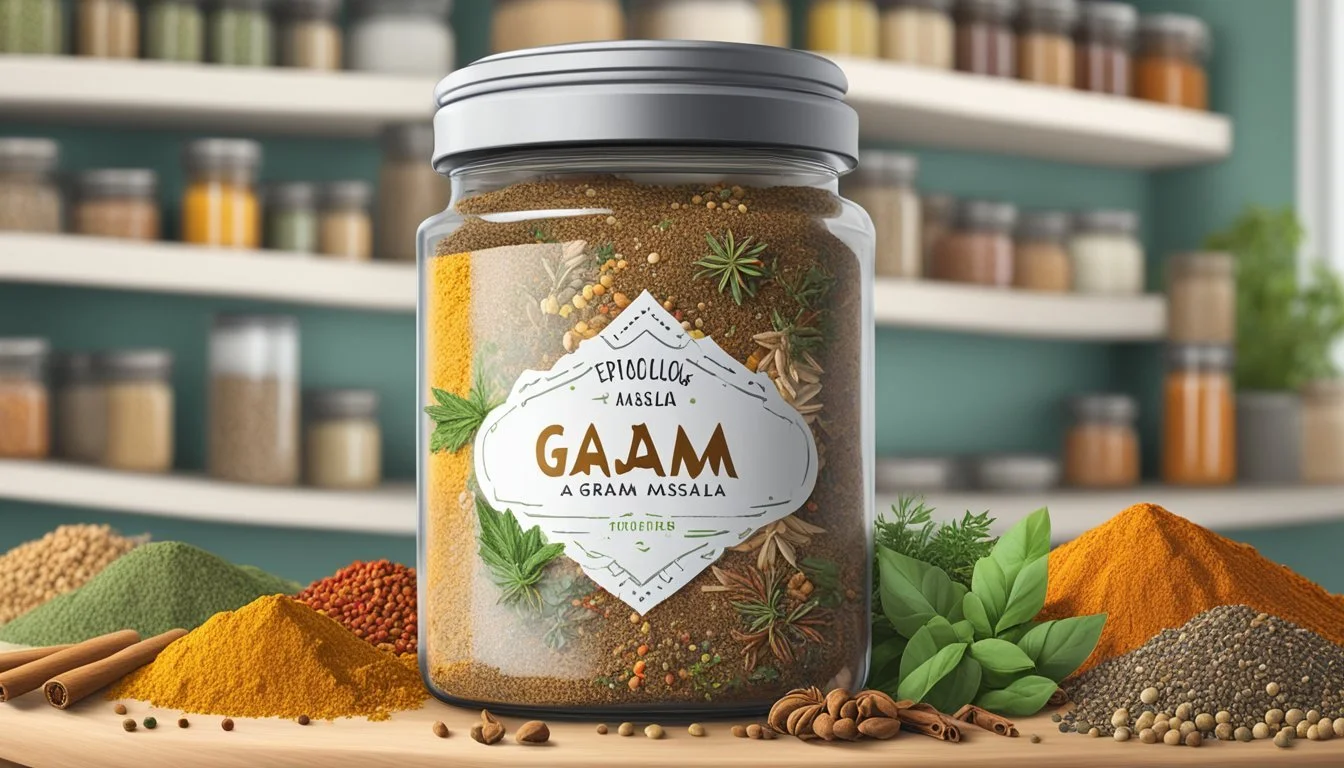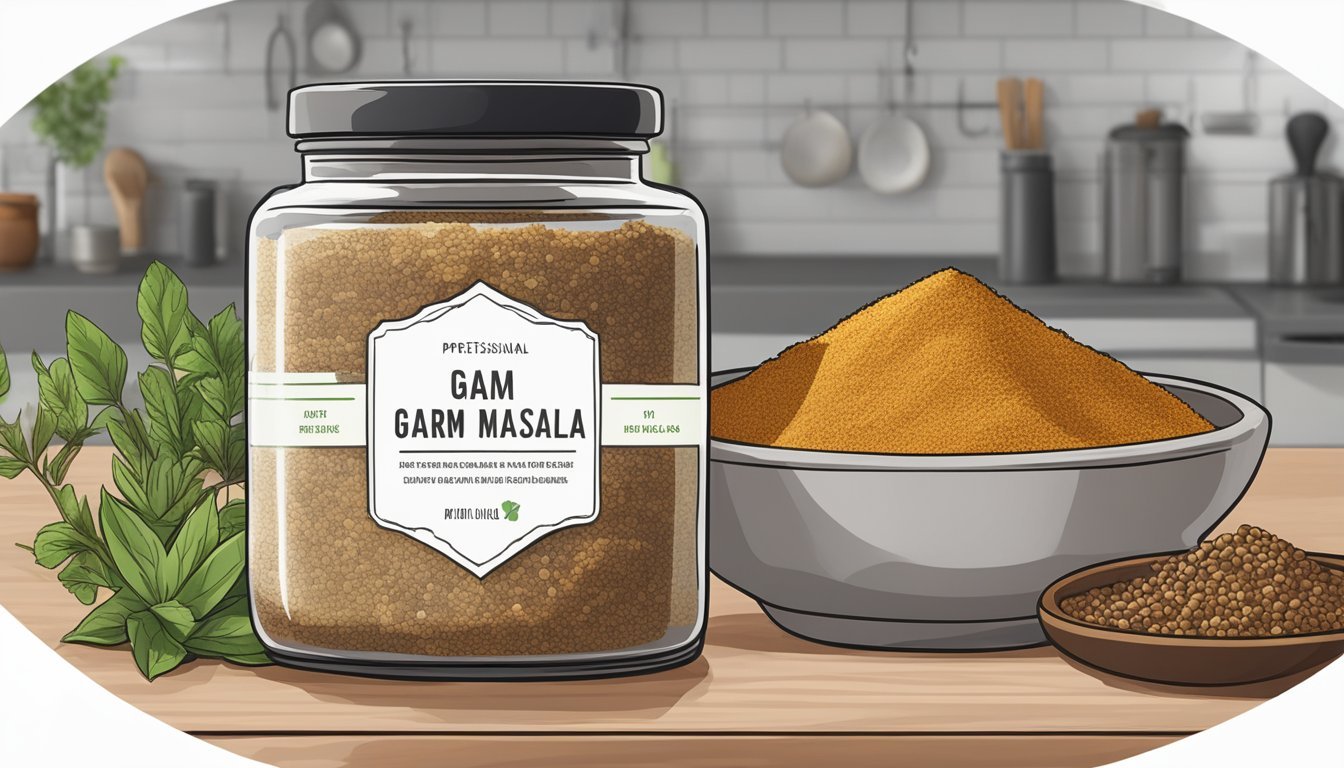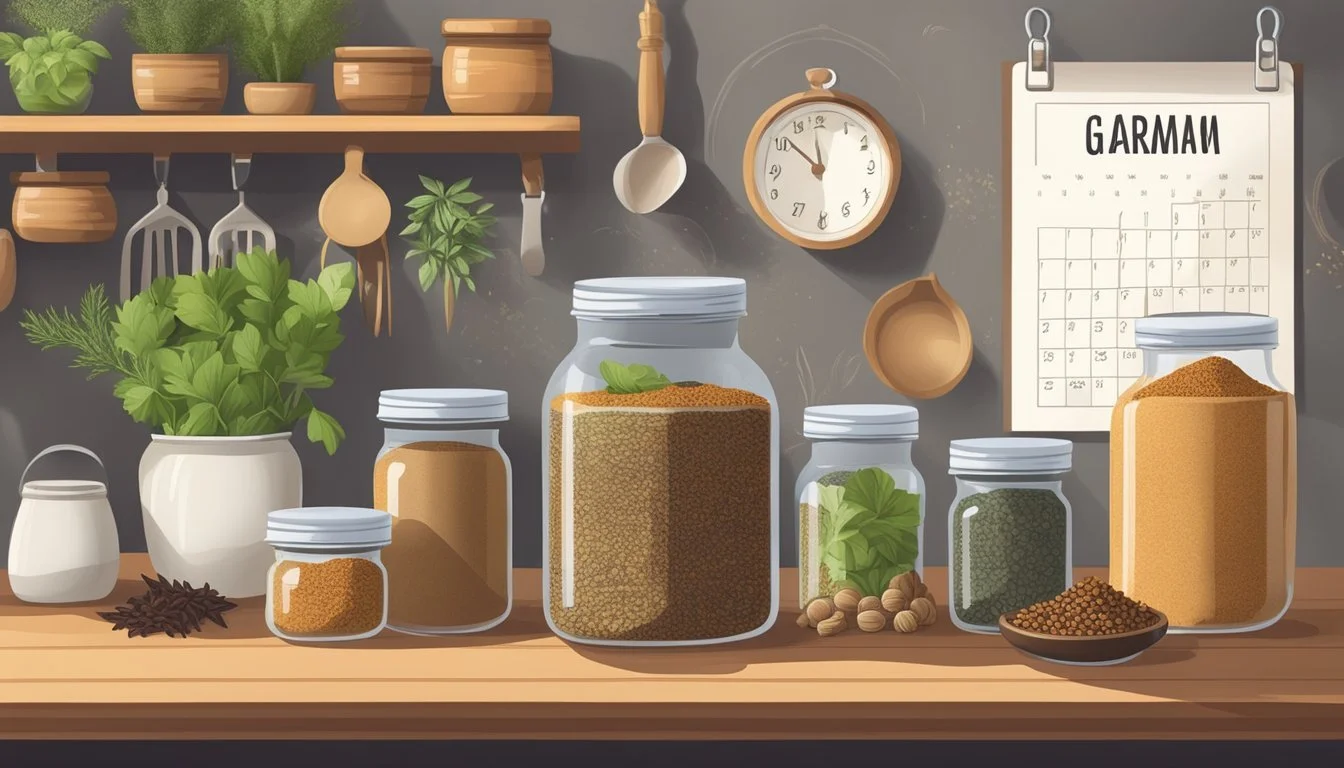How Long Does Garam Masala Last?
Shelf Life and Storage Tips
Garam masala is a blend of ground spices originating from the Indian subcontinent. It's a staple in many households and is prized for its ability to impart a warm, aromatic flavor to dishes. The longevity of garam masala, like other spice blends, is contingent on how it is stored. Typically, when kept in an airtight container away from heat and light, garam masala can maintain its flavor and potency for a substantial period.
Given its composition of various spices, garam masala's shelf life may vary slightly based on the individual shelf life of its ingredients. However, it is generally observed that garam masala's flavors are most potent within six months of its creation, even if it may not necessarily spoil for several years. While the spice blend does not go bad in the sense of becoming unsafe to consume, it can gradually lose its distinctiveness and aromatic qualities over time.
Understanding this gradual diminishment of flavor can be beneficial for culinary enthusiasts looking to maximize the impact of garam masala in their cooking. Regularly replacing older batches and keeping an eye on freshness can ensure that dishes retain the rich flavors intended when using this versatile and beloved spice blend.
Composition of Garam Masala
Garam Masala is a complex spice blend integral to North Indian cuisine. Typically, this fragrant mixture includes a diverse array of spices, each contributing to the overall flavor profile.
Main Ingredients:
Cumin Seeds (how long do cumin seeds last?): Adds a warm and earthy note.
Coriander Seeds (how long do seeds last?): Impart a citrusy, slightly sweet flavor.
Black Peppercorns:(how long do black peppercorns last?) Provide a sharp, penetrating spiciness.
Green Cardamom: Lends a sweet, floral aroma.
Cloves: Contribute a strong, sweet, pungent flavor.
Cinnamon: Known for its woody and sweet taste.
These spices may be used whole or ground, but for Garam Masala, they are traditionally toasted to enhance their flavors before being finely ground. The blend sometimes includes other spices such as nutmeg (how long does nutmeg last?), mace, (how long does mace last?) star anise,(how long does star anise last?) bay leaves, fennel seeds, (how long do fennel seeds last?) allspice, and fennel - each adding their own distinct characteristics.
The proportions of these ingredients can vary widely according to regional preferences or personal taste, which results in each Garam Masala having a unique flavor. It is typically added to dishes near the end of cooking or sprinkled on as a finishing touch to preserve the spice blend's aromatic qualities. This versatility makes it a staple in Indian culinary practices, where it adds depth and warmth to a multitude of dishes.
Freshness and Shelf Life
When discussing the longevity of garam masala, key factors include its freshness, how it is stored, and its ability to retain potency in flavor and aroma. In its freshest form, garam masala offers a potent aromatic experience, with the flavors of its composite spices in full profile.
The shelf life of garam masala can be sustained for approximately 6 months when stored properly. To maximize freshness, garam masala should be kept in an airtight container. This restricts exposure to air and moisture, which can accelerate the degradation of the spices' essential oils and aroma.
Condition Effect on Shelf Life Airtight storage Extends freshness Exposure to air Reduces potency
Storing garam masala in a dark place, such as a cupboard or pantry, also helps to preserve its quality. Light can lead to the deterioration of spices, contributing to a loss in flavor intensity over time.
While garam masala does not necessarily go "bad" in the traditional sense, it will gradually lose its potency the longer it is kept. After 6 months, although still safe to consume, the blend's characteristic aroma and rich flavor may begin to diminish, affecting the taste of dishes to which it is added. It is recommended to take a sensory approach, where the spice blend's aromatic profile is assessed before use to ensure it meets culinary needs.
Proper Storage Methods
Maintaining the potency and flavor of Garam masala is largely influenced by storage technique. Optimal preservation approaches can extend the shelf life and ensure spices retain their robustness.
Whole vs Ground Spices
Whole spices generally last longer than ground spices due to less surface area being exposed to the elements that expedite spoilage. Garam masala made from freshly ground whole spices will retain peak freshness for about a few weeks and can remain safe to use up to six months if stored correctly.
Choosing the Right Container
An airtight container is critical for preserving the integrity of Garam masala. Glass or metal jars with tight-sealing lids are preferred. Ensure that the container used is completely dry to avoid the introduction of moisture, which can lead to mold growth or a lackluster flavor.
Environmental Factors for Preservation
Storing Garam masala in a cool, dark place away from direct sunlight or heat sources such as stoves or ovens will help to prolong its shelf life. Avoid areas where the spice may be exposed to steam or humidity, and consider the use of desiccant packets if moisture is a consistent issue in storage spaces.
Impact on Taste and Aroma
Garam masala, a complex blend of spices, is renowned for its aromatic quality and its ability to impart a richness of flavor that defines many dishes in Indian cuisine. Its flavor profile includes a harmonious balance between earthy and sweet characteristics, making it an indispensable seasoning in culinary applications.
Over time, the volatility of essential oils in spices, which contribute to both taste and aroma, diminishes. This reduction in fragrant compounds directly correlates with a milder taste profile. The aroma, often an indicator of freshness and quality, may become less pronounced, causing the spices to deliver a less flavorful experience when added to dishes.
A fresh batch of garam masala typically offers a potent aroma and a rich flavor impact. As the blend ages, its properties change:
Freshness (0-6 months): Garam masala is at its peak, offering robust aromatic qualities and full-bodied flavor.
Matured (6-12 months): Aroma and flavor start to decline, but can still contribute significantly to a dish.
Aging (1-2 years): The loss of aromatic oils becomes noticeable; flavor is subdued but still present.
Stale (beyond 2 years): Aroma and taste are greatly diminished, though not harmful to consume.
To maximize the seasoning's lifespan, storage in an airtight container in a cool, dark place is recommended to preserve its flavorful essence. Regular inspection through smell can serve as a helpful gauge to determine the state of the spice blend's aroma and, by extension, its potency in enhancing the taste of culinary creations.
Culinary Uses
Garam masala is a versatile and aromatic spice blend integral to Indian cuisine, used to enhance the flavor of various dishes through its warming properties.
Integration into Dishes
Garam masala is often added towards the end of the cooking process to retain its aromatic profile. It can be sprinkled over soups and curries to introduce a layer of warmth and complexity. When used in marinades or rubs, garam masala infuses protein, be it meat or vegetarian substitutes, with its distinctive flavors.
Regional Variations and Preferences
Each region in India has its own version of garam masala, with variations tailored to local tastes and available spices. In the North, a typical blend may feature a greater quantity of warming spices like cinnamon and cardamom, while in the South, the addition of ingredients like star anise or black pepper might be more common.
Homemade vs Commercial Blends
Homemade garam masala, made using a spice grinder, allows for customization in flavor and freshness, often resulting in a more potent blend than store-bought versions. Commercial blends, while convenient, can have a uniform taste and may contain preservatives. Cooking aficionados often prefer homemade blends for their purity and the joy of personalizing their dishes.
Nutritional Information
Garam masala is a blend of ground spices used extensively in South Asian cuisine, with each constituent spice contributing its unique nutritional profile. Typically consumed in small amounts, garam masala itself is not a significant source of major nutrients like calories, macro, and micronutrients when looking at typical serving sizes used in culinary preparations.
A typical serving size of garam masala (approximately 1.5 grams) contains:
Calories: 4.6 kcal
Total Fat: 0.2 g
Saturated Fat: 0 g
Trans Fat: 0 g
Sodium: 1.2 mg
Total Carbohydrates: 0.9 g
Dietary Fiber: 0.4 g
Sugars: 0 g
Protein: 0.2 g
While each component of garam masala may have its nutritional benefits, the small quantities incorporated into dishes mean that it does not significantly impact daily nutrient values. However, ingredients common in garam masala such as cinnamon, cloves, and cardamom, are known to have antioxidants with phenolic compounds.
The spices in garam masala do not significantly contribute to iron intake, saturated fat, or sugar in a diet when consumed in the typical quantities found in recipes. The aromatic mix is more valued for its flavoring properties and potential health benefits from the antioxidants present in spices than for its nutritional content.
Homemade Garam Masala Recipe
Creating homemade garam masala involves selecting quality spices, toasting to enhance flavor, and proper grinding. Freshly prepared blends surpass pre-packaged variants in aroma and taste, elevating dishes like curry with their robust flavor profile.
Ingredient Selection
The key to an exceptional homemade garam masala lies in the quality and freshness of the spices used. A typical recipe may include:
Roasted coriander seeds: 2 tablespoons
Cumin seeds: 2 tablespoons
Whole black peppercorns: 1 tablespoon
Green cardamom pods: 1 tablespoon
Black cardamom: 3 pods
Whole cloves: 1 teaspoon
Cinnamon stick (broken into smaller pieces): 3-inch piece
Bay leaves: 2 leaves
Star anise: 1 whole
Mace: 1 blade
The selected spices should be whole rather than ground, as they retain freshness longer and deliver a more potent aroma and taste upon grinding.
Grinding Process
Once the spices are chosen and measured, the grinding process begins with toasting. Toasting the spices is essential, as it releases their essential oils, enhancing the garam masala's flavor:
Heat a dry pan on medium heat.
Add coriander seeds, cumin seeds, cardamom pods (how long do cardamom pods last?), cloves, and other whole spices.
Toast them, stirring frequently, until they become fragrant (approximately 2-3 minutes).
Allow the spices to cool before grinding.
Grind the toasted spices using a spice grinder or mortar and pestle until they achieve a fine powder consistency. For optimal freshness, the preparation should be done in small batches, enough for a few servings to ensure the blend remains fresh.
Storage and Use
Storing homemade garam masala properly is crucial for maintaining its freshness. The ground spice blend should be placed in an airtight container and kept in a cool, dark location. Properly stored, homemade garam masala can retain its flavor for up to three months.
As for usage, homemade garam masala is versatile; one can incorporate it into various dishes, including meats, vegetables, and lentils. Unlike curry powder, which is a Western invention, garam masala is authentic to Indian cuisine, contributing deep, warm, and complex flavors to the dishes it seasons. It is typically added towards the end of cooking to preserve its delicate flavors.
Identifying Quality Garam Masala
When selecting a quality garam masala, several factors come into play to ensure the spice blend is fresh, aromatic, and imparts the desired warming and flavorful taste to dishes.
Aroma: The fragrance of garam masala should be potent and immediate upon opening the container. The absence of a robust scent could indicate staleness. Freshness is closely tied to the intensity of the aroma.
Color and Texture: A fresh, quality garam masala typically has a vibrant color indicative of the spices' potency, and the texture should be fine and consistent, without any clumping which can suggest exposure to moisture.
Ingredients: A garam masala's contents should list whole spices of known origin. The inclusion of high-quality, traditional spices—such as coriander, cumin, cardamom, and cinnamon—contribute to the blend's authentic, warming properties and rich taste.
Here's a checklist for ensuring high-quality garam masala:
Scent: Should be strong and fresh.
Color: Look for a vibrant hue.
Texture: Expect a fine powder, free from clumps.
Flavor: Taste should be rich and complex, not dull or flat.
Incorporation of these criteria will help consumers identify a garam masala that is both fresh and capable of adding the desired flavorful depth to their cooking.
Substitutions and Alternatives
When garam masala is unavailable, cooks can confidently reach for several alternatives that maintain the essence of this aromatic spice blend. Curry powder stands as one of the most versatile substitutions, containing some of garam masala’s key components like turmeric and ginger. However, curry powder has a more complex and varied taste profile compared to the warm notes of garam masala.
A more precise alternative involves combining individual spices. Below is a table of substitutes that one can use to emulate garam masala's flavor:
Spice Quantity Flavor Profile Cumin 1 part Earthy Coriander 1 part Citrusy Cardamom 1/2 part Sweet, Aromatic Cloves 1/4 part Pungent Cinnamon 1/2 part Sweet, Woody Black Pepper 1/4 part Spicy
Italics are used to denote spices that offer warmth and sweetness, closely matching garam masala's characteristics. In contrast, bold spices provide an intense flavor that should be used sparingly.
Homemade substitutions allow cooks to exclude or adjust the amount of certain spices, such as turmeric and ginger, based on their personal preference and the dish's requirements. They can start with a base of cumin and coriander, both earthy and slightly sweet, and then fine-tune the mixture with cardamom's sweet, floral notes and a hint of nutmeg's warm, nutty flavor.
These alternatives guarantee that a dish will not lose its intended depth of flavor just because garam masala is absent from the pantry.
Cultural Significance
In India, garam masala holds a place of honor for its integral role in the country's cuisine. This blend of spices is more than just a collection of aromatic ingredients; it embodies the warmth and inviting essence that Indian cuisine is known for. Often passed down through generations, families carefully craft their own unique recipes of garam masala, each varying in composition and proportion but consistent in its ability to infuse dishes with a rich, complex flavor profile.
Key Aspects of Garam Masala in Indian Culture:
Heritage: A reflection of regional culinary traditions and family heritage.
Warmth: Associated with creating a sense of comfort and warmth in Indian cooking.
Indian Cuisine: Integral to the authenticity of a wide array of Indian dishes.
In the Hindi language, the term 'garam' means 'hot,' and 'masala' translates to 'spices,' indicating the blend's intention to heat the body in the Ayurvedic sense, rather than spice level. The spices used are believed to elevate body temperature, thus contributing to a balanced state of health.
Typical Components:
Cumin
Coriander
Cardamom
Cloves
Black Pepper
Cinnamon
Each household may tailor these components to personal tastes and the regional influences of Indian states, thus elevating garam masala to a cultural symbol admired globally for its depth and versatility within Indian cuisine.
Frequently Asked Questions
In addressing the longevity and suitability of garam masala, it's essential to consider how long it retains its quality, its compatibility with various diets, and its potential to cause allergic reactions.
Shelf Life Concerns
How long does garam masala last? When stored properly in an airtight container, a fresh homemade garam masala spice blend can maintain its quality for up to 6 months. The potency of the spices diminishes over time, so it's recommended to label the container with the date it was made to track freshness.
Suitability for Various Diets
Is garam masala suitable for a vegetarian diet? Yes, garam masala is a blend of ground spices and is inherently vegetarian. It can be used to add flavor to vegetarian dishes (What wine goes well with vegetarian dishes?) without concern for dietary restrictions.
Allergy Information
Does garam masala contain allergens? Garam masala typically doesn't contain common allergens, but since it's a spice blend, one should check the ingredients for any specific spice they might be allergic to. If one has a known spice allergy, they should consult the label or contact the manufacturer to confirm its safety.


